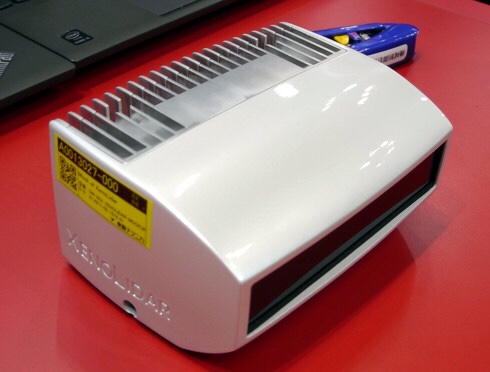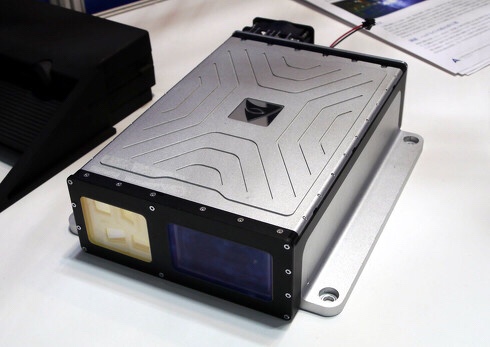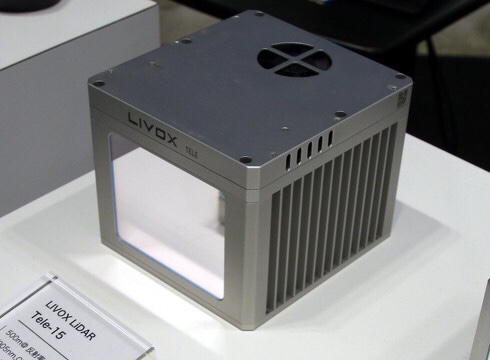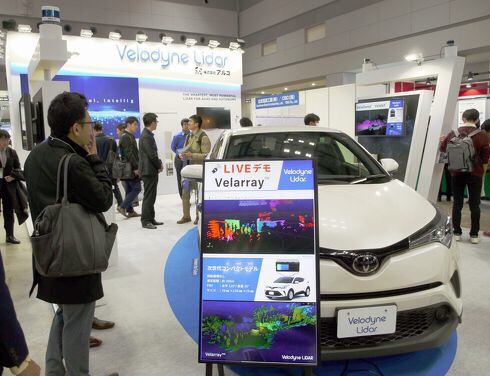
XenoLidar testing machine

AE-110 developed by AEye

“Tela15” developed by Livox

Velodyne exhibition booth: attracting great attention
The latest LiDAR for autonomous driving: Tokyo Automotive World 2020
February 4, 2020
Automotive World 2020:
At “Automotive World 2020” (January 15-17, 2020, Tokyo Big Sight). The latest LiDAR products were exhibited.
Currently, the development of LiDAR for self-driving cars is overheating, and proposals for new methods are being announced one after another.
LiDAR: Level 4 / autonomous driving
Introducing the latest technology of the LiDAR manufacturer exhibited at this “Automotive World 2020”.
Level 4 / LiDAR (Light Detection and Ranging) is extremely important for autonomous driving systems.
LiDAR: latest trends
The latest trend in LiDAR development is “to eliminate moving parts, increase reliability and reduce size”.
Various approaches will also be exhibited to improve the accuracy of target object detection.
“XenoLidar”
Toyo Technica adopts the “True-Solid-State” (complete solid state) type.
“XenoLidar”, a LiDAR with no moving parts or rotating mechanism, was on display.
Belgium / XenomatiX and Marelli are jointly working on technology development.
Eliminates any moving parts and lowers the price of the device itself.
Mass production of millions:
LiDAR / module set can be offered for 500 to 1000 euros (about 60,000 to 120,000 yen).
Do not use MEMS mirrors.
Laser irradiation method:
Adopts multi-beam method (simultaneous laser irradiation and 3D mapping).
AEye: “AE-110”
AEye is a US startup that develops artificial perception technology.
AEye exhibited the solid state LiDAR system “AE-110” equipped with AI.
AE-110:
Realized integration of color images captured by the camera with point cloud data detected by LiDAR.
Using this integrated data, the ROI (video occupied area) of the object (pedestrian, car) is automatically extracted by AI.
Livox: “Tela15”
A booth of Livox, a subsidiary of DJI, a major Chinese drone.
The “Tela-15” that can detect a maximum distance of 500m / far distance is exhibited.
The biggest feature is that the laser scanning pattern uses a proprietary / non-iterative scanning method.
Non-repetitive scanning method:
Scans all objects within the field of view (FOV) using a unique non-horizontal scanning pattern.
Velodyne:
It was the most lively exhibition on LiDAR.
Velodyne is considered to be the largest company developing LiDAR
The company’s LiDAR products are used in Google’s self-driving cars.
MONOist